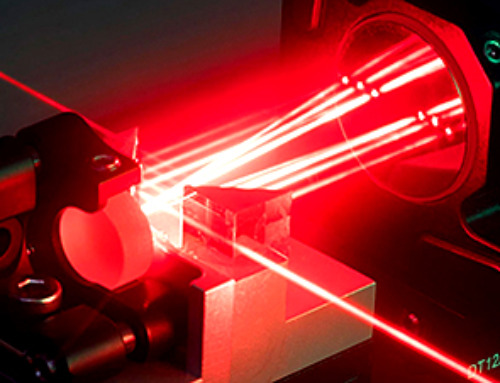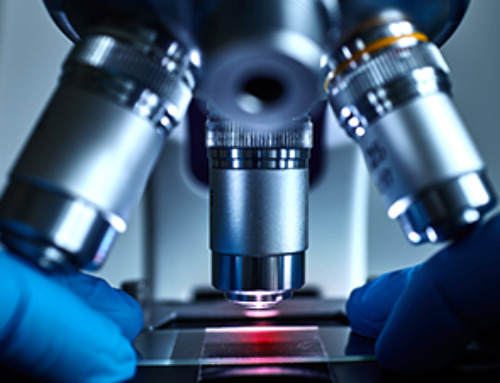Johns Hopkins Medicine researchers have developed a color-coded test that quickly signals whether newly developed nanoparticles—ultra small compartments designed to ferry medicines, vaccines and other therapies—deliver their cargo into target cells. Historically, nanoparticles have a very low delivery rate to the cytosol, the inside compartment of cells, releasing only about 1%–2% of their contents. The new testing tool, engineered specifically to test nanoparticles, could advance the search for next-generation biological medicines. The technology builds upon nanoparticles currently used against cancer and eye disease, and in vaccines for viruses including SARS-CoV-2, the virus that causes COVID-19.
“Many of the current assessment tools for nanoparticles only test whether a nanoparticle reaches a cell, not if the therapy can successfully escape the degradative environment of the endosome to reach inside the cytosol of the cell, which is where the medicine needs to be located for performance,” says Jordan Green, Ph.D., professor of biomedical engineering at the Johns Hopkins University School of Medicine. The new tool was created to track location and nanoparticle release, he said.
Previous research has estimated that only about 1%-2% of nanoparticles “eaten” by cells are able to escape the cellular compartments that trap them to avoid being digested or “spit back out.” In addition to the properties of its cargo, a nanoparticle’s chemical properties determine whether it is accepted by a cell and able to evade its cellular defenses.
To surmount such obstacles to final delivery, Green and his team designed a screening tool that assesses hundreds of nanoparticle formulations on their ability to not just reach a cell, but also how efficiently the nanoparticle can escape with its cargo to reach a cell’s interior.
The test uses mouse cells grown in the laboratory that are genetically engineered to carry a florescent marker called Gal8-mRuby, which shines orange-red when a cellular envelope that engulfs a nanoparticle opens, releasing its cargo into the cell.
Images of the process are then analyzed by a computer program that quickly tracks the nanoparticle location using red fluorescent light and quantifies how effective the nanoparticles are at being released into the cell by assessing the amount of orange-red fluorescent light. Using this technique, a laboratory can screen hundreds of unique nanoparticles for delivery in a few hours, with detailed information about the uptake of the nanoparticles and the delivery of their cargo.
In experiments in mice, Green and his team administered biodegradable nanoparticles carrying mRNA that encoded a gene called luciferase, which makes cells glow. The researchers then tracked whether the mouse cells accepted the gene and began expressing it—lighting up target cells like a lightning bug.
Green’s team found that the top-performing nanoparticles in the cellular tests had a high positive correlation to nanoparticle gene delivery performance in living mice, showing the nanoparticle assay is a good predictor of successful cargo delivery.
In further mouse studies, the researchers discovered that different chemical group combinations in the polymer-based nanoparticles led the nanoparticles to target different tissue types. By analyzing how the particles behaved in the mouse’s body, the researchers found that polymer chemical properties could direct the nanoparticle gene therapy to specific target cells, such as endothelial cells in the lungs or B cells in the spleen.
“By fine-tuning small chemical changes, we can steer a nanoparticle to specific tissues and even specific cells,” said Green. “This would allow us to develop more precisely delivered therapies, which could improve both efficacy and safety.”
Nanoparticle delivery of biological drugs is a growing field, particularly for gene therapies and vaccines.
Other researchers involved in the study include Yuan Rui, David R. Wilson, Stephany Y. Tzeng, Hannah M. Yamagata, Deepti Sudhakar, Cynthia A. Berlinicke and Donald J. Zack of the Johns Hopkins University School of Medicine; Marranne Conge of the Johns Hopkins University School of Medicine and Berea College; and Anthony Tuesca of AstraZeneca.
News
GLP-1 Drugs Like Ozempic Work, but New Research Reveals a Major Catch
Three new Cochrane reviews find evidence that GLP-1 drugs lead to clinically meaningful weight loss, though industry-funded studies raise concerns. Three new reviews from Cochrane have found that GLP-1 medications can lead to significant [...]
How a Palm-Sized Laser Could Change Medicine and Manufacturing
Researchers have developed an innovative and versatile system designed for a new generation of short-pulse lasers. Lasers that produce extremely short bursts of light are known for their remarkable precision, making them indispensable tools [...]
New nanoparticles stimulate the immune system to attack ovarian tumors
Cancer immunotherapy, which uses drugs that stimulate the body’s immune cells to attack tumors, is a promising approach to treating many types of cancer. However, it doesn’t work well for some tumors, including ovarian [...]
New Drug Kills Cancer 20,000x More Effectively With No Detectable Side Effects
By restructuring a common chemotherapy drug, scientists increased its potency by 20,000 times. In a significant step forward for cancer therapy, researchers at Northwestern University have redesigned the molecular structure of a well-known chemotherapy drug, greatly [...]
Lipid nanoparticles discovered that can deliver mRNA directly into heart muscle cells
Cardiovascular disease continues to be the leading cause of death worldwide. But advances in heart-failure therapeutics have stalled, largely due to the difficulty of delivering treatments at the cellular level. Now, a UC Berkeley-led [...]
The basic mechanisms of visual attention emerged over 500 million years ago, study suggests
The brain does not need its sophisticated cortex to interpret the visual world. A new study published in PLOS Biology demonstrates that a much older structure, the superior colliculus, contains the necessary circuitry to perform the [...]
AI Is Overheating. This New Technology Could Be the Fix
Engineers have developed a passive evaporative cooling membrane that dramatically improves heat removal for electronics and data centers Engineers at the University of California San Diego have created an innovative cooling system designed to greatly enhance [...]
New nanomedicine wipes out leukemia in animal study
In a promising advance for cancer treatment, Northwestern University scientists have re-engineered the molecular structure of a common chemotherapy drug, making it dramatically more soluble and effective and less toxic. In the new study, [...]
Mystery Solved: Scientists Find Cause for Unexplained, Deadly Diseases
A study reveals that a protein called RPA is essential for maintaining chromosome stability by stimulating telomerase. New findings from the University of Wisconsin-Madison suggest that problems with a key protein that helps preserve chromosome stability [...]
Nanotech Blocks Infection and Speed Up Chronic Wound Recovery
A new nanotech-based formulation using quercetin and omega-3 fatty acids shows promise in halting bacterial biofilms and boosting skin cell repair. Scientists have developed a nanotechnology-based treatment to fight bacterial biofilms in wound infections. The [...]
Researchers propose five key questions for effective adoption of AI in clinical practice
While Artificial Intelligence (AI) can be a powerful tool that physicians can use to help diagnose their patients and has great potential to improve accuracy, efficiency and patient safety, it has its drawbacks. It [...]
Advancements and clinical translation of intelligent nanodrugs for breast cancer treatment
A comprehensive review in "Biofunct. Mater." meticulously details the most recent advancements and clinical translation of intelligent nanodrugs for breast cancer treatment. This paper presents an exhaustive overview of subtype-specific nanostrategies, the clinical benefits [...]
It’s Not “All in Your Head”: Scientists Develop Revolutionary Blood Test for Chronic Fatigue Syndrome
A 96% accurate blood test for ME/CFS could transform diagnosis and pave the way for future long COVID detection. Researchers from the University of East Anglia and Oxford Biodynamics have created a highly accurate [...]
How Far Can the Body Go? Scientists Find the Ultimate Limit of Human Endurance
Even the most elite endurance athletes can’t outrun biology. A new study finds that humans hit a metabolic ceiling at about 2.5 times their resting energy burn. When ultra-runners take on races that last [...]
World’s Rivers “Overdosing” on Human Antibiotics, Study Finds
Researchers estimate that approximately 8,500 tons of antibiotics enter river systems each year after passing through the human body and wastewater treatment processes. Rivers spanning millions of kilometers across the globe are contaminated with [...]
Yale Scientists Solve a Century-Old Brain Wave Mystery
Yale scientists traced gamma brain waves to thalamus-cortex interactions. The discovery could reveal how brain rhythms shape perception and disease. For more than a century, scientists have observed rhythmic waves of synchronized neuronal activity [...]





















